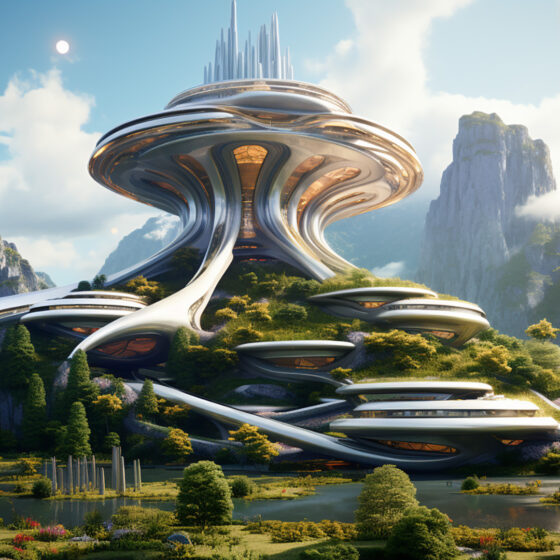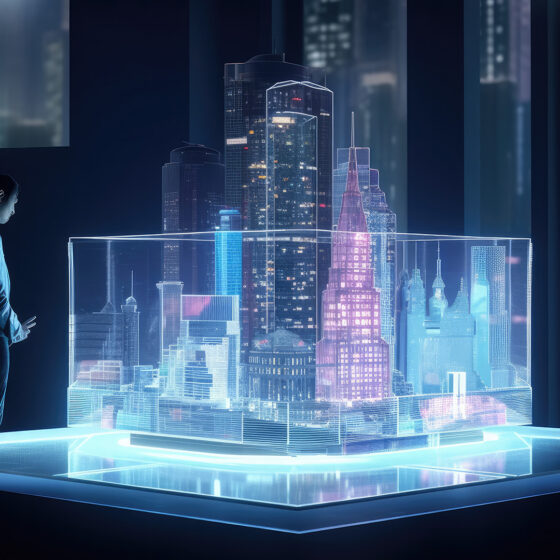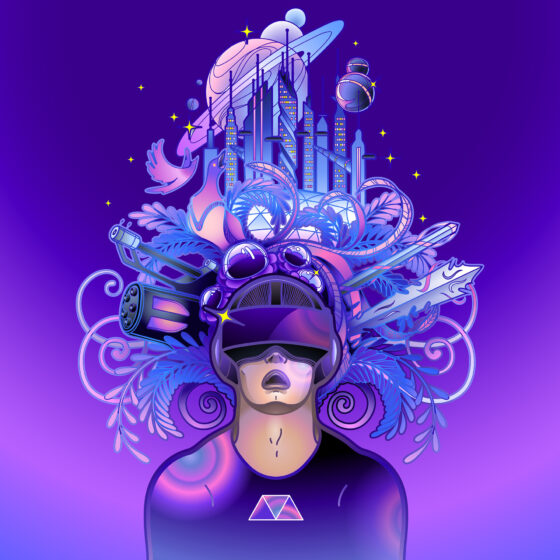In the world of architectural rendering, where the boundaries between imagination and reality blur, the future is both promising and exciting....
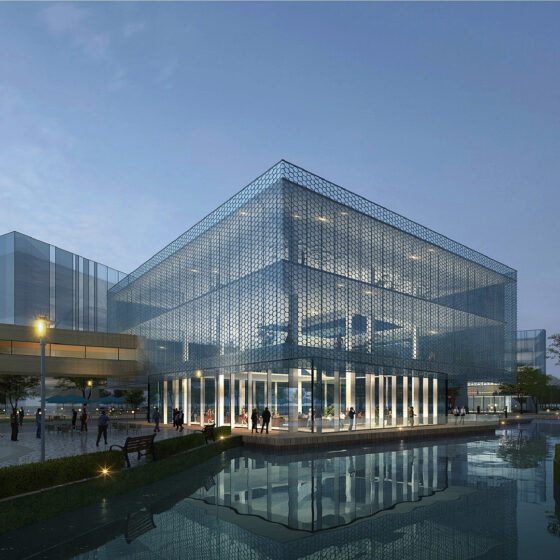
In the world of architectural rendering, where the boundaries between imagination and reality blur, the future is both promising and exciting. As we look ahead to the year 2024, the architectural rendering landscape is poised for significant transformations. Technology, creativity, and innovation are converging to redefine how we visualize and communicate architectural designs. In this comprehensive exploration, we will delve deep into the architectural rendering trends that are set to redefine the industry in 2024 and beyond.
1. Real-Time Rendering Takes the Spotlight
In 2024, real-time rendering technology will reach new heights. Architects and designers will witness their creations come to life instantly. This groundbreaking technology is set to revolutionize design decision-making and client collaboration. Real-time rendering promises shorter project timelines, enhanced client interactions, and a more immersive design experience.
Real-time rendering is not just about quick visual feedback; it’s about fostering creativity and exploration. Architects can experiment with various design options and instantly visualize the results, making the design process more dynamic and efficient.
2. Virtual Reality (VR) and Augmented Reality (AR) Integration
The integration of VR and AR technologies continues to be a driving force in architectural rendering. These technologies empower architects and clients to step into virtual spaces and explore designs as if they were physically present.
Virtual Reality (VR): VR headsets will become more accessible and sophisticated, providing an immersive experience that allows users to navigate through architectural spaces, inspect details, and assess designs from different angles. VR is ideal for design presentations and virtual walkthroughs.
Augmented Reality (AR): AR overlays digital information onto the real world, making it a valuable tool for on-site presentations. Architects can use AR to overlay 3D models onto physical locations, helping clients visualize how a design will fit into the existing environment.
3. AI-Powered Generative Design and Rendering
Artificial intelligence (AI) is becoming an indispensable tool for architects and rendering professionals. In 2024, AI-driven generative design and rendering will take center stage.
Generative Design: AI algorithms assist in generating design options based on predefined parameters. Architects can set criteria such as structural stability, energy efficiency, and aesthetics, and AI will produce numerous design iterations that meet these criteria. This approach fosters creativity and helps architects explore unconventional design possibilities.
AI-Assisted Rendering: AI can predict how natural light interacts with architectural elements. This predictive rendering helps architects create spaces that maximize natural light and energy efficiency, contributing to sustainable design practices.
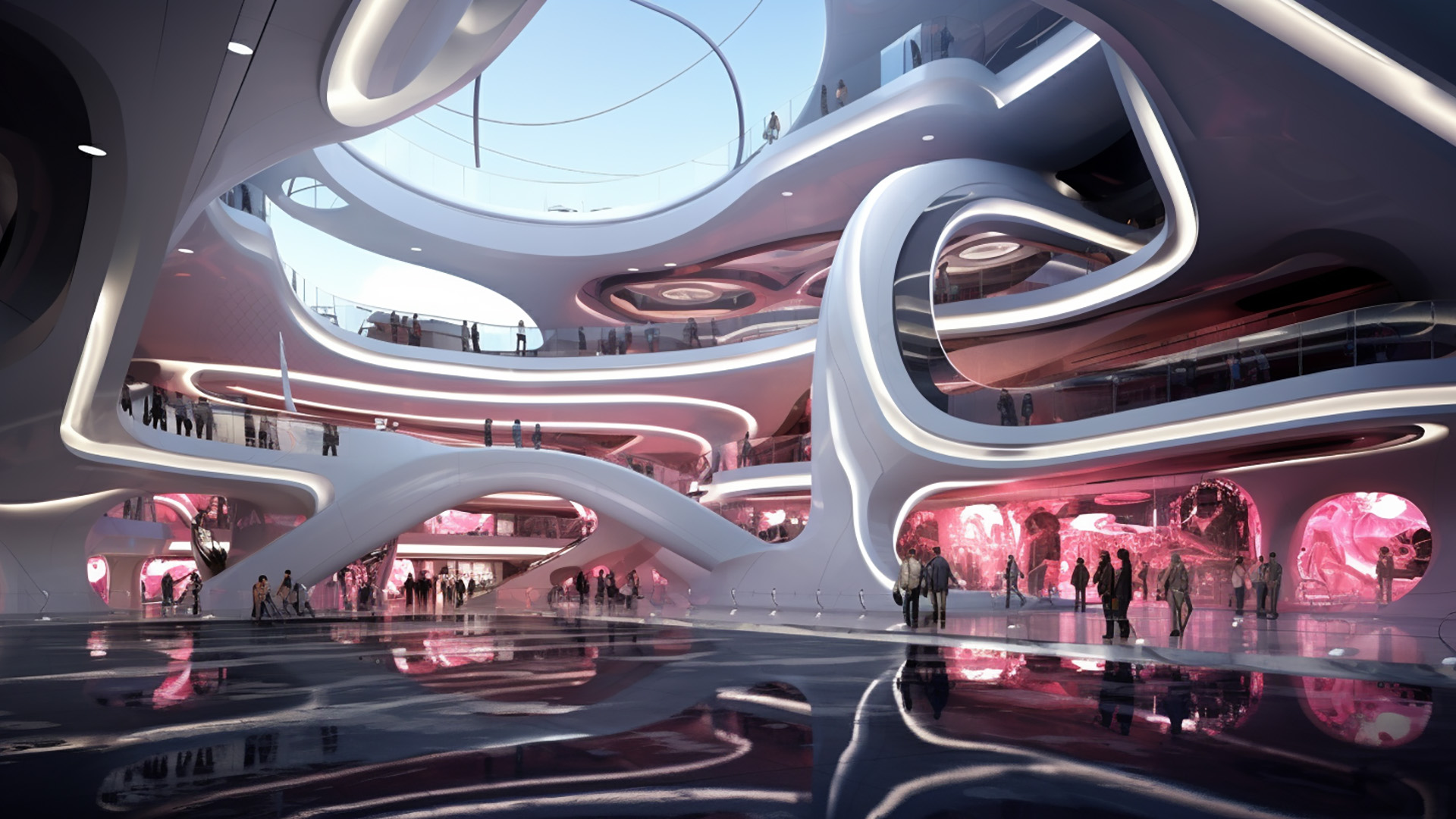
Futuristic Shopping Mall Interior Concept Rendering Created Using Generative AI
4. Immersive 3D Tours Redefine Engagement
The era of traditional walkthroughs is giving way to immersive 3D tours. These tours offer viewers an interactive experience that goes beyond static renderings or 360-degree panoramas. Users can explore spaces at their own pace, zoom in for detailed views, and zoom out for a comprehensive understanding.
These tours are a game-changer for showcasing real estate properties, interior designs, and architectural projects. They provide a sense of autonomy to viewers, allowing them to focus on areas of interest and gain a deeper understanding of the design.
5. Photorealistic Materials and Lighting
Advancements in rendering technology have ushered in photorealistic materials and lighting effects. Architectural renderings are becoming indistinguishable from actual photographs. This level of realism allows architects and designers to present their vision in a way that’s both convincing and captivating.
Photorealistic rendering is particularly valuable in marketing and client presentations. It allows stakeholders to envision the final product with a high degree of accuracy.

Living Room Rendering for the Majestic
6. Parametric Design and Computational Modeling
Parametric design and computational modeling are revolutionizing architectural form and structure. These tools use algorithms to define and manipulate design parameters, enabling architects to create complex, organic shapes that were once challenging to achieve.
Parametric design is particularly well-suited for sustainable architecture. It allows architects to optimize designs for energy efficiency, daylighting, and natural ventilation, resulting in environmentally conscious structures.
7. Cross-Platform Collaboration for Global Teams
Architectural teams often span multiple locations and time zones. Collaborative tools, including cloud-based platforms and project management software, are essential for seamless communication and coordination among architects, designers, and clients.
Cross-platform collaboration enhances efficiency and streamlines the design process. It ensures that all team members have access to the latest project updates and can provide input and feedback in real-time.
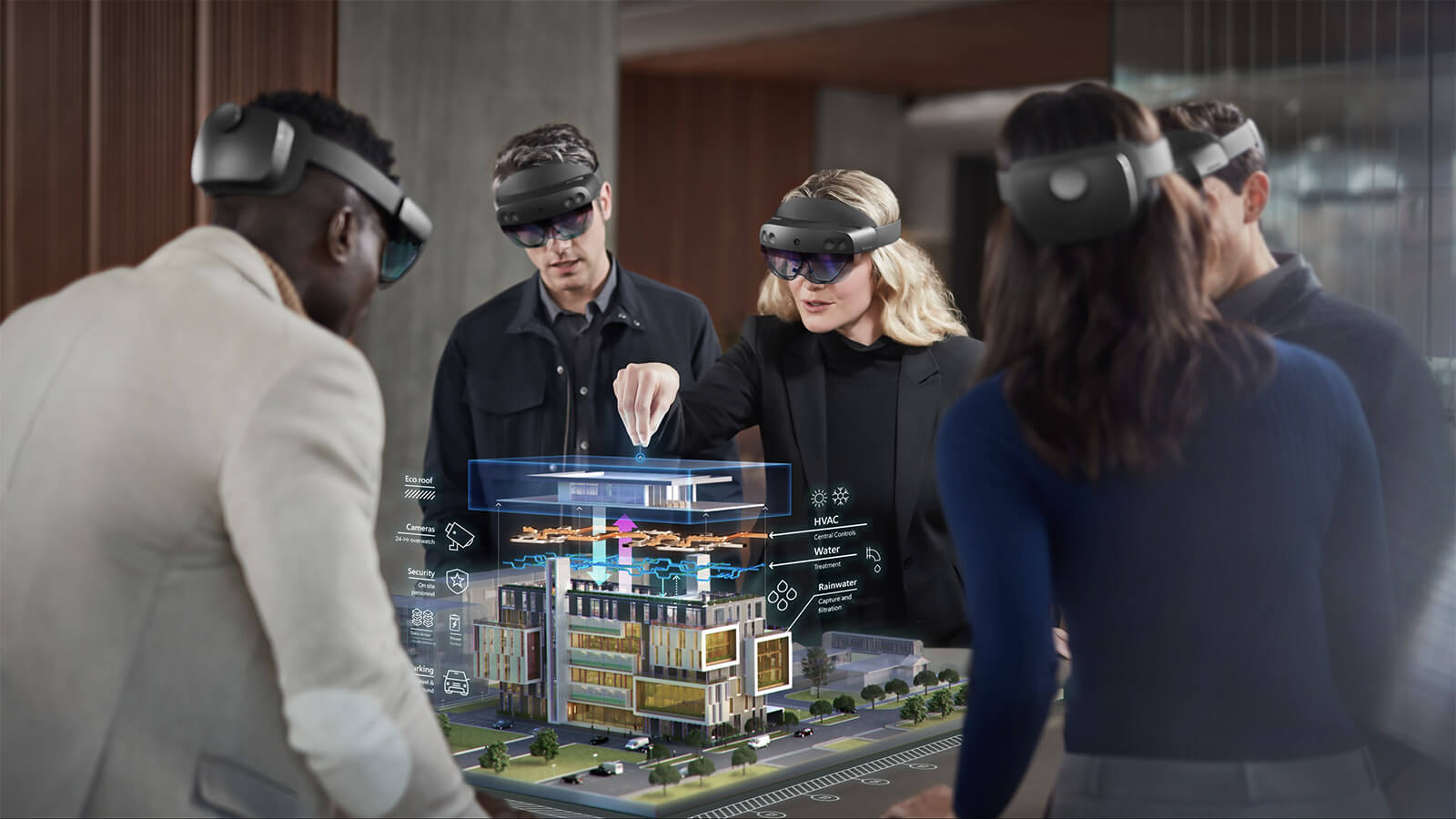
Architects Collaborating on Virtual Architectural Model using AR Headsets
8. Sustainability and Eco-Friendly Visualization
Sustainability is no longer a niche concern; it’s a global imperative. In 2024, architectural rendering will place a stronger emphasis on showcasing sustainable features within designs. These features may include:
Renewable Energy: Renderings will highlight the integration of solar panels, wind turbines, and other renewable energy sources.
Green Building Materials: Sustainable materials like reclaimed wood, recycled steel, and low-VOC paints will be prominently featured.
Energy Efficiency: Visualizations will demonstrate how designs optimize energy consumption through features like efficient insulation, double-glazed windows, and smart heating and cooling systems.
Green Spaces: Renderings will showcase the incorporation of green roofs, vertical gardens, and outdoor green spaces within architectural designs.
By visually representing these sustainable elements, architects and developers can inspire clients to make environmentally conscious design choices.
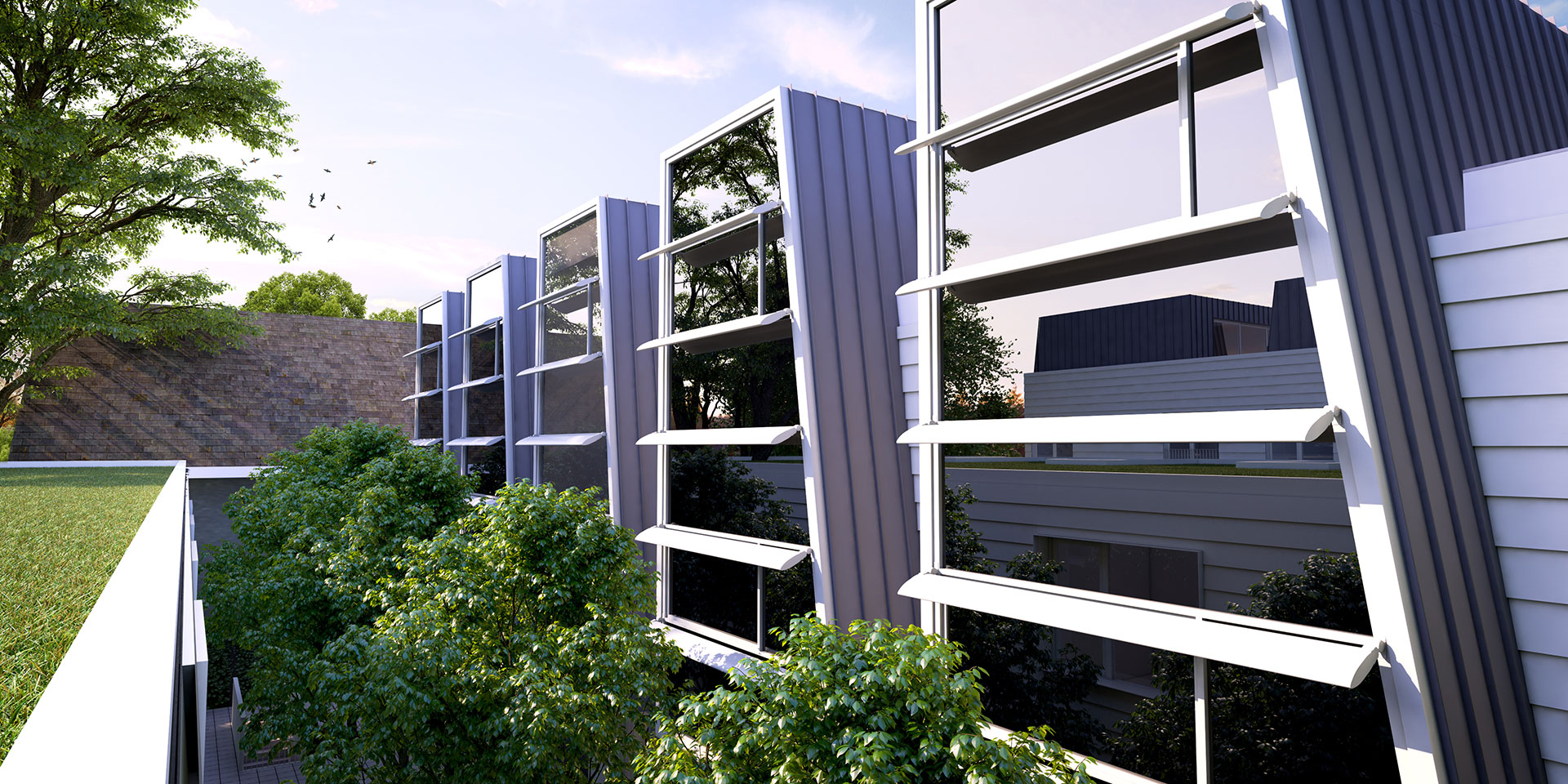
Turner’s Dairy Exterior Renderings Showcasing Sustainable Materials
9. Immersive Storytelling Enhances Engagement
Architectural rendering is evolving from static images and animations to immersive storytelling experiences. These narratives help convey the essence and context of architectural projects, fostering a deeper connection between clients and the design vision.
Immersive storytelling can take various forms:
Narrative-Driven Virtual Experiences: These experiences allow viewers to explore a design as if they were part of a story. Narratives can focus on the design process, the history of a building, or the experience of living or working in a space.
Contextual Storytelling: Renderings can be embedded within narratives that highlight the broader context of a project, such as its historical significance or its impact on the surrounding community.
User-Driven Narratives: Interactive storytelling tools enable viewers to choose their own path through a virtual space, enhancing engagement and customization.
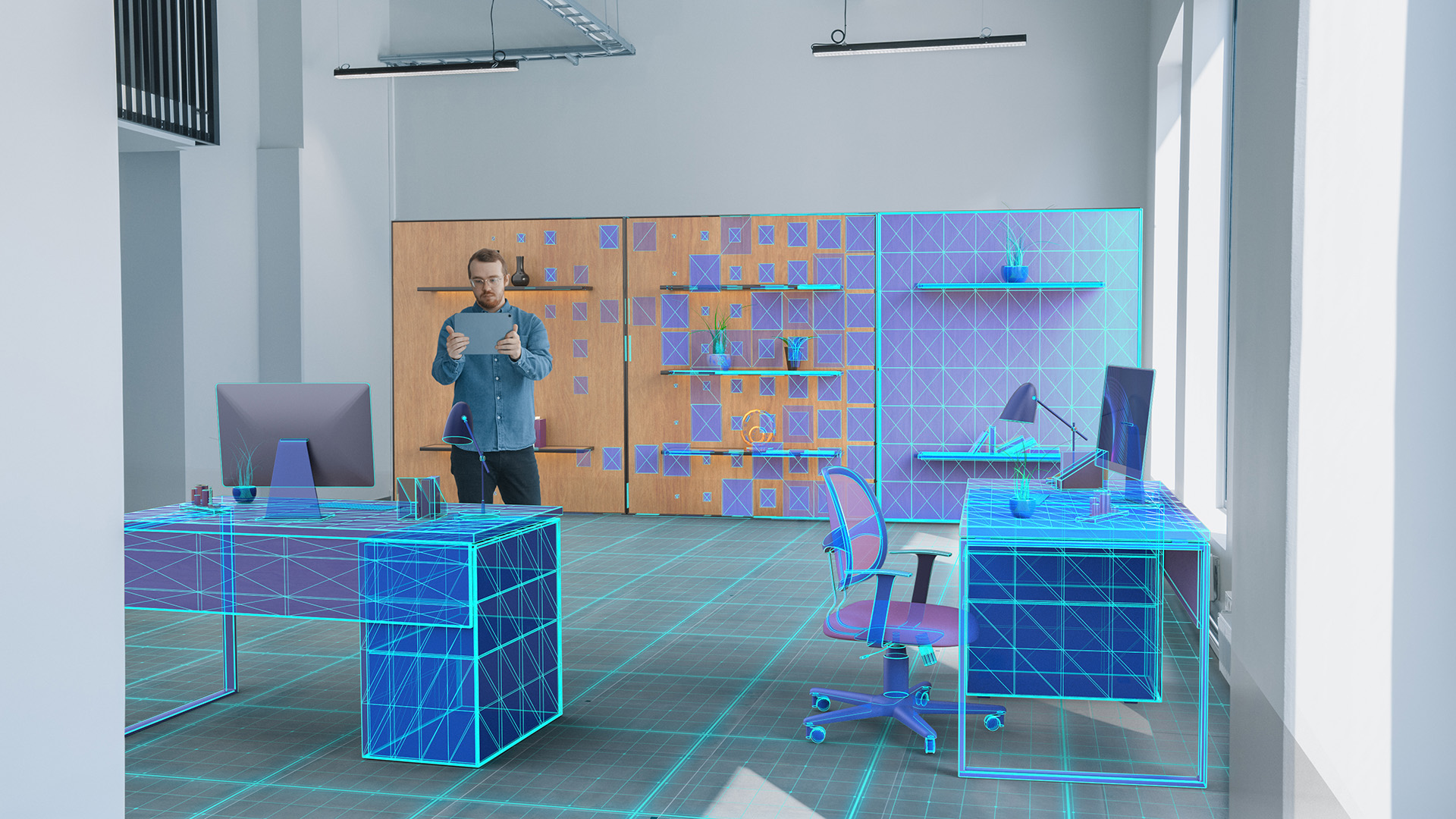
Immersive Design and Storytelling
10. Accessibility and Inclusivity
Inclusivity is gaining prominence in architectural visualization. Rendering tools are now used to simulate accessible spaces, aiding architects and designers in creating environments that are welcoming and functional for all individuals, including those with disabilities. This trend reflects a commitment to making architecture and design more inclusive and accessible to everyone.
As we step into 2024, architectural rendering is not just a tool for visualizing designs; it’s an art form that continually pushes the boundaries of creativity and technology. Architects, designers, and visualization experts who embrace these trends are not only enhancing their design capabilities but are also offering clients a more immersive and informative journey from concept to realization. The future of architectural rendering is brilliantly illuminated, guiding us toward a new era of design visualization.
Inquire today to learn more about the many ways you can incorporate cutting-edge architectural renderings into your design, presentation, and sales processes.
Feature Image Credit: DiXenix / Adobe Stock





